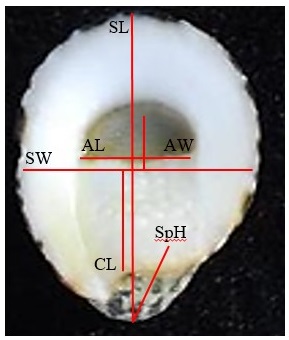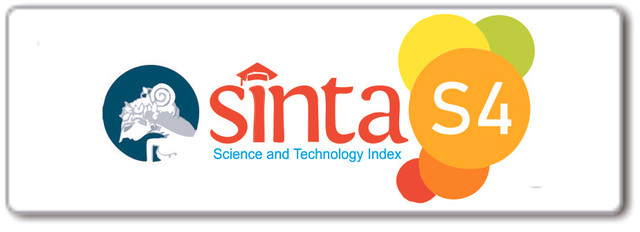Morphometric variation and species density of Nerita (Neritidae: Gastropoda) in the coastal waters of Ambon Island, Indonesia
Abstract
Nerita is one of the species with high diversity in the coastal waters of Ambon Island. With this high diversity, the way to assess the length of various Nerita species is through a morphometric study. Meanwhile, density studies are useful for knowing the number of each of these diverse Nerita species. The purpose of this study was to identify the Nerita species to calculate the density and morphometrics. This research was conducted in an intertidal area in two locations, namely Seri and Tawiri villages. The morphometric characteristics of Nerita consist of shell length, shell width, aperture length, spire height, columella length, aperture length, and lip thickness. The density calculation refers to the density formula. The results showed that there were 9 species of Nerita, namely N. polita, N. chamaeleon, N. patula, N. exuvia, N. maxima, N. squamulata, N. albicilla, and N. planospira. N. polita has the highest density value (41.33 ind/m2) while N. patula (0.04 ind/m2) has the lowest density value. Morphometric analysis shows that there are variations in shell size among these species. Shell morphometric variations can be used as a reference for studying the phenetic diversity of Neritaidae in Ambon Island waters
Downloads

Copyright (c) 2023 Fredy Leiwakabessy, Louvenska Nona Latupeirissa

This work is licensed under a Creative Commons Attribution-NonCommercial-ShareAlike 4.0 International License.
Authors who publish with BIOEDUPAT: Pattimura Journal of Biology and Learning agree to the following terms:
- Authors retain copyright and grant the journal right of first publication with the work simultaneously licensed under a Creative Commons Attribution License (CC BY-NC-SA 4.0) that allows others to share the work with an acknowledgment of the work's authorship and initial publication in this journal.
- Authors are able to enter into separate, additional contractual arrangements for the non-exclusive distribution of the journal's published version of the work (e.g., post it to an institutional repository or publish it in a book), with an acknowledgment of its initial publication in this journal.
- Authors are permitted and encouraged to post their work online (e.g., in institutional repositories or on their website) prior to and during the submission process, as it can lead to productive exchanges, as well as earlier and greater citation of published work.








 This work is licensed under a
This work is licensed under a 